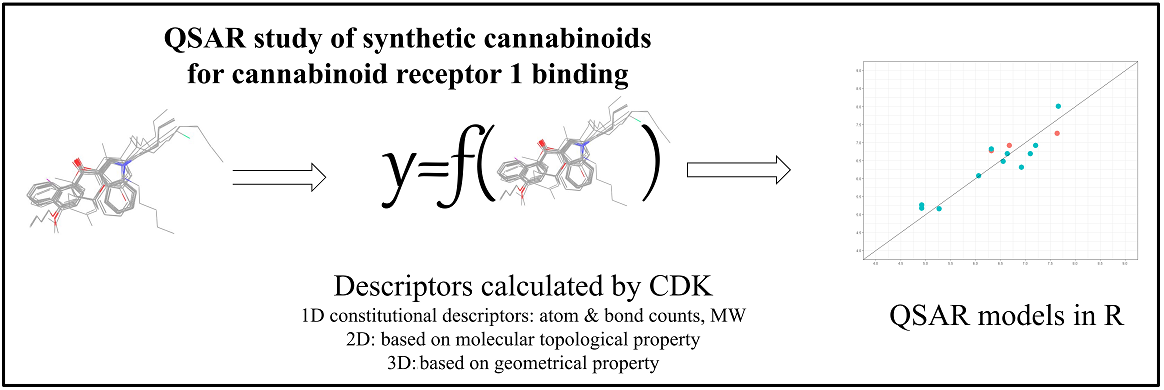In recent years, there have been frequent reports on the adverse effects of synthetic cannabinoid (SC) abuse. SCs cause psychoactive effects, similar to those caused by marijuana, by binding and activating cannabinoid receptor 1 (CB1R) in the central nervous system. The aim of this study was to establish a reliable quantitative structure-activity relationship (QSAR) model to correlate the structures and physicochemical properties of various SCs with their CB1R-binding affinities. We prepared 15 SCs and their derivatives (tetrahydrocannabinol [THC], naphthoylindoles, and cyclohexylphenols) and determined their binding affinity to CB1R, which is known as a dependence-related target. We calculated the molecular descriptors for dataset compounds using an R/CDK (R package integrated with CDK, version 3.5.0) toolkit to build QSAR regression models. These models were established and statistical evaluations were performed using the mlr and plsr packages in R software. The most reliable QSAR model was obtained from the partial least squares regression method via external validation. This model can be applied in vivo to predict the addictive properties of illicit new SCs. Using a limited number of dataset compounds and our own experimental activity data, we built a QSAR model for SCs with good predictability. This QSAR modeling approach provides a novel strategy for establishing an efficient tool to predict the abuse potential of various SCs and to control their illicit use.

